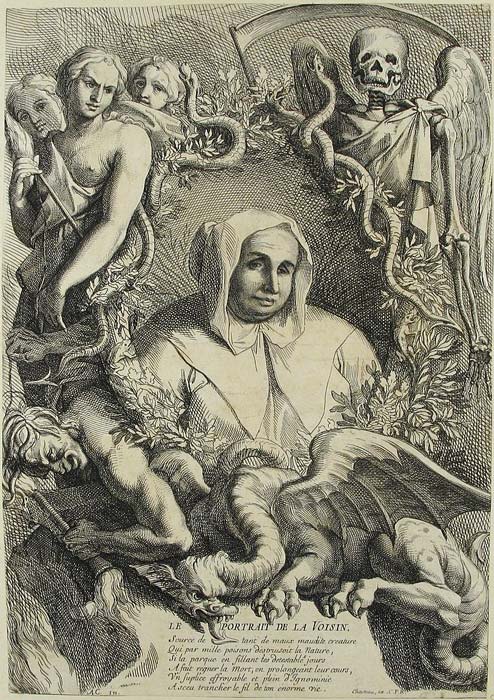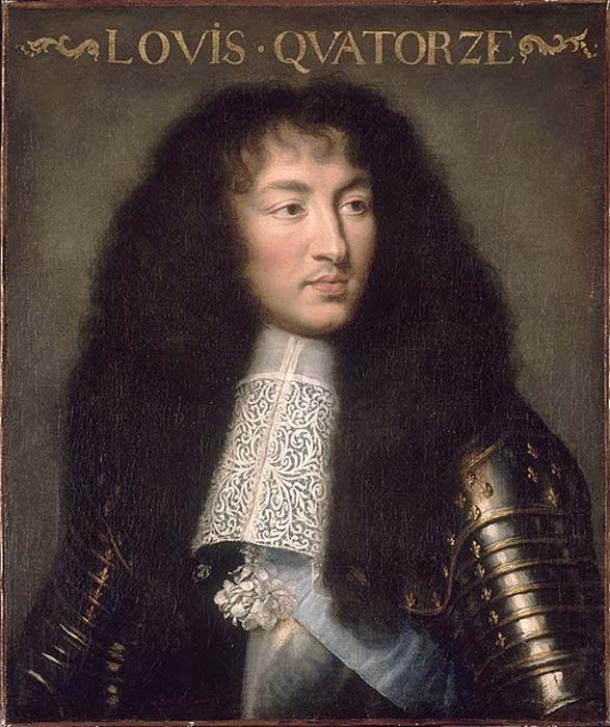In a darkened room stands a 40-year-old woman named Catherine Monvoisin. Her figure is lit only by torches held by the faceless men standing in front of her, men who are sentencing her to death by fire. It is the 17th century, where such a death sentence is an unusual ending to someone’s life. But Catherine is an unusual woman.
Catherine was the wife of a silk merchant and jeweler and lived a life of comfort in Parisian Society. She was a philanthropist, entrepreneur, fortune teller, mother, and art lover. But she was also a professional poisoner, alleged provider of sorceries, and an alleged witch who plunged the French aristocracy into turmoil, and even tried to kill a king.
She was more famously known as “La Voisin” and was a central figure in “L’affaire des Poisons” or the “Affair of the Poisons”. Catherine controlled a wide network of fortune-tellers from her position in Paris society. She provided poison, abortion, aphrodisiacs, arranged black masses, and even claimed to offer magical services.

La Voisin (Antoine Coypel / Public Domain )
She was so famous that she even drew clients from the aristocracy, who could afford to pay her high prices which funded her lavish lifestyle. Her organization, in performing commissioned black magic and murder by poison, took thousands of lives.
From Fortune Teller to Witch
La Voisin was born Catherine Deshayes in the year 1640 and married a Parisian silk merchant and jeweler named Antoine Monvoisin, who had his own shop in Paris. Things went well for some time until the business of her husband was completely ruined. It was believed that before marriage, her life was quite difficult as she faced poverty, and upon her husband’s business failing, she refused to return to the same poverty again. At that time, she settled on fortune-telling.
She stated that she barely used anything that God had gifted to her. She also said that she learned fortune-telling when she was nine years old. After the ruin of her husband’s business, she planned to make huge profits through this fortune-telling.
Her divination was questioned in 1665 or 1666 by the Congregation of the Mission, a society of Roman Catholic priests, but she defended herself, which allowed her to continue her fortune-telling business. Catherine then turned her fortune-telling to palm reading as well as physiognomy or face reading. After that, she turned to more covert practices as well, including helping her clients to have illicit abortions that were illegal during that time.

Fortune Tellers were in high demand in 17th century France (Georges de la Tour / Public Domain )
She used to collect huge amounts of money from her abortion business, as most of her clients were from wealthy families or from the French aristocracy. As her connections in society brought customers from the Paris elite, she began slowly progressing towards black magic. She crafted amulets and magical objects to sell. Then she started making love potions and aphrodisiacs. She was also hired to perform witchcraft and sorceries, casting spells to bring wealth or success to her clients.
Her Reputation Grows
Fame and wealth quickly began to escalate in Catherine’s business. She then went further, becoming more embroiled in witchcraft, Satan worship, and black magic, actively recruiting and operating as the head of a witches’ evil cabal. She would hold giant luxurious parties for the elite of society and there were many rumors that she was unfaithful to her husband.
All these darker magical practices made her richer still. One of the most notable practices was the black mass, the ceremony celebrated by satanic groups, which she would perform for her wealthy clientele. In these rituals, she would call on Satan to grant wishes. These practices involved sacrifices of animals, and even babies.
Slowly, as her list of connections expanded, she started to branch out into poisons. She used to sell these poisons to the people who wanted someone to die. This eventually earned her the nickname of “The Poisoner” or “La Voisin”. She developed a network of professional poisoners to help her to expand her business of selling poisons. She was also commissioned to do the poisoning herself.
The claimed alchemist Adam Lesage, one of the lovers of Catherine, told of her murdering her own husband, an accusation she denied. It is believed that throughout her life, she might have been responsible for the deaths of around 2,500 infants due to her poisoning. However, throughout this time she remained a high-profile socialite, and her sheer charm made no one suspect her.
The Witch Hunt Begins
The downfall of La Voisin started with a client of Catherine named Madame de Montespan, who became the official mistress to King Louis XIV of France after holding a black mass to win victory in the love, and to get the king’s attention. But even after using the love potions provided by Catherine, the king started becoming disinterested in her. The king suspected that he might be a victim of poisoning, and gave the order to the chief of Paris police to investigate this possibility following the arrest of another fortune teller, Magdelaine de La Grange.

Louis XIV of France (Charles Le Brun / Public Domain )
La Grange then pointed the finger at Marie Bosse, who was a poisoner and member of the network of La Voisin. However, Marie was also a rival of La Voisin, and confessed to the chief of police about the Affair of the Poisons, and Catherine’s involvement. Catherine was quickly arrested, and the scandal rocked 17th century French society.
The Truth Comes Out
Things became worse and worse when other associates of Catherine started to give information about the black magic and the mass poisonings. The high society members involved in this were also imprisoned. But even after the truth about La Voisin was known, she was never tortured, as there was the fear that she might reveal some high society people’s or politicians’ names connected to her crimes.
Upon further interrogation, Catherine always denied she had any connection with poisons and refused to reveal the name of her clients, including Montespan. She also denied performing abortions. But during her trial, evidence such as vials, jugs, packets, potions, crystals, cauldrons, and items of witchcraft was presented against La Voisin.
With all this proof against her, she was put to death in 1680 by burning. It was believed that she poisoned over 1,000 adults and killed numerous infants in her rituals. A total of 300 people were arrested during the investigation, and 36 were executed for their crimes.
Top Image: La Voisin is believed to have poisoned thousands of people. Source: Igor Igorevich / Adobe Stock.
By Bipin Dimri
Related posts:
Views: 0
 RSS Feed
RSS Feed

















 July 19th, 2021
July 19th, 2021  Awake Goy
Awake Goy  Posted in
Posted in  Tags:
Tags: 
















